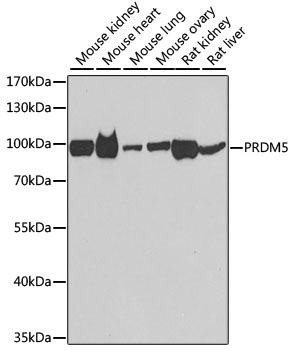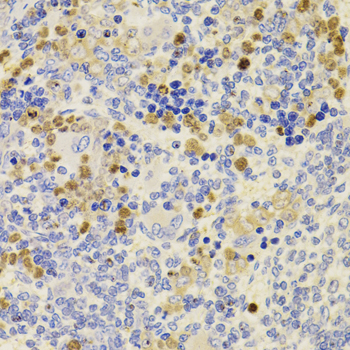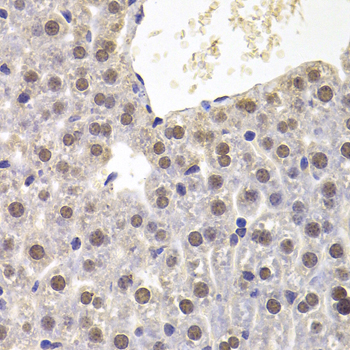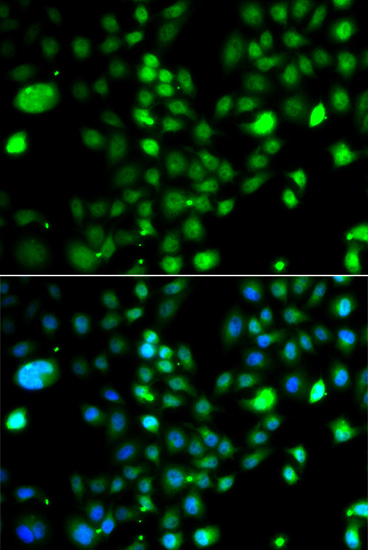-
Product Name
PRDM5 Polyclonal Antibody
- Documents
-
Description
Polyclonal antibody to PRDM5
-
Tested applications
WB, IHC, IF
-
Species reactivity
Human, Mouse, Rat
-
Alternative names
PRDM5 antibody; BCS2 antibody; PFM2 antibody; PR/SET domain 5 antibody
-
Isotype
Rabbit IgG
-
Preparation
Antigen: Recombinant fusion protein containing a sequence corresponding to amino acids 1-100 of human PRDM5 (NP_061169.2).
-
Clonality
Polyclonal
-
Formulation
PBS with 0.02% sodium azide, 50% glycerol, pH7.3.
-
Storage instructions
Store at -20℃. Avoid freeze / thaw cycles.
-
Applications
WB 1:500 - 1:2000
IHC 1:50 - 1:200
IF 1:50 - 1:200 -
Validations

Western blot - PRDM5 Polyclonal Antibody
Western blot analysis of extracts of various cell lines, using PRDM5 antibody at 1:1000 dilution.Secondary antibody: HRP Goat Anti-Rabbit IgG (H+L) at 1:10000 dilution.Lysates/proteins: 25ug per lane.Blocking buffer: 3% nonfat dry milk in TBST.Detection: ECL Basic Kit .Exposure time: 90s.

Immunohistochemistry - PRDM5 Polyclonal Antibody
Immunohistochemistry of paraffin-embedded rat spleen using PRDM5 antibody at dilution of 1:100 (40x lens).

Immunohistochemistry - PRDM5 Polyclonal Antibody
Immunohistochemistry of paraffin-embedded mouse liver using PRDM5 antibody at dilution of 1:100 (40x lens).

Immunohistochemistry - PRDM5 Polyclonal Antibody
Immunohistochemistry of paraffin-embedded mouse spleen using PRDM5 antibody at dilution of 1:100 (40x lens).

Immunofluorescence - PRDM5 Polyclonal Antibody
Immunofluorescence analysis of A549 cells using PRDM5 antibody . Blue: DAPI for nuclear staining.
-
Background
Sequence-specific DNA-binding transcription factor. Represses transcription at least in part by recruitment of the histone methyltransferase EHMT2/G9A and histone deacetylases such as HDAC1. Regulates hematopoiesis-associated protein-coding and microRNA (miRNA) genes. May regulate the expression of proteins involved in extracellular matrix development and maintenance, including fibrillar collagens, such as COL4A1 and COL11A1, connective tissue components, such as HAPLN1, and molecules regulating cell migration and adhesion, including EDIL3 and TGFB2. May caused G2/M arrest and apoptosis in cancer cells.
Related Products / Services
Please note: All products are "FOR RESEARCH USE ONLY AND ARE NOT INTENDED FOR DIAGNOSTIC OR THERAPEUTIC USE"
